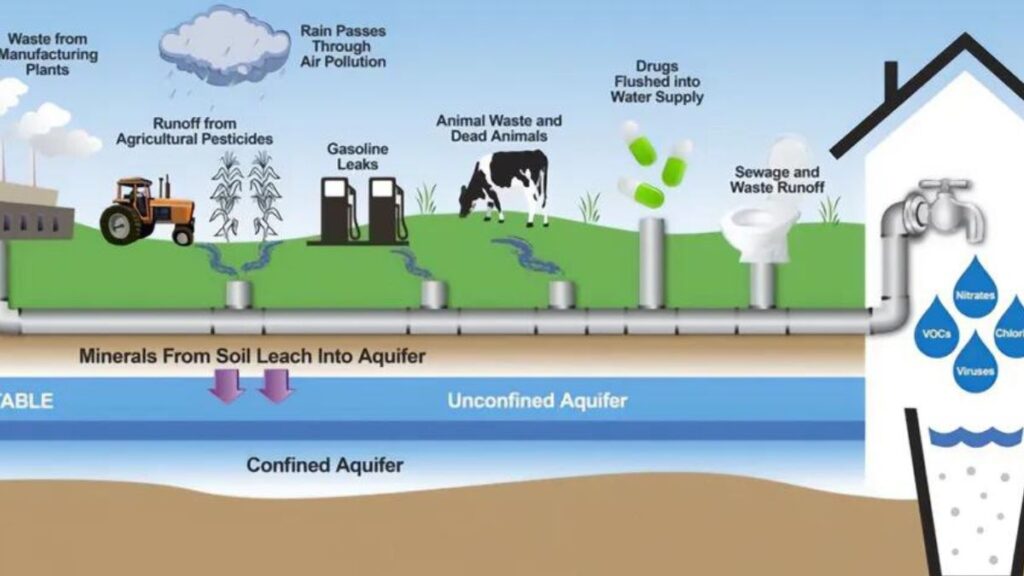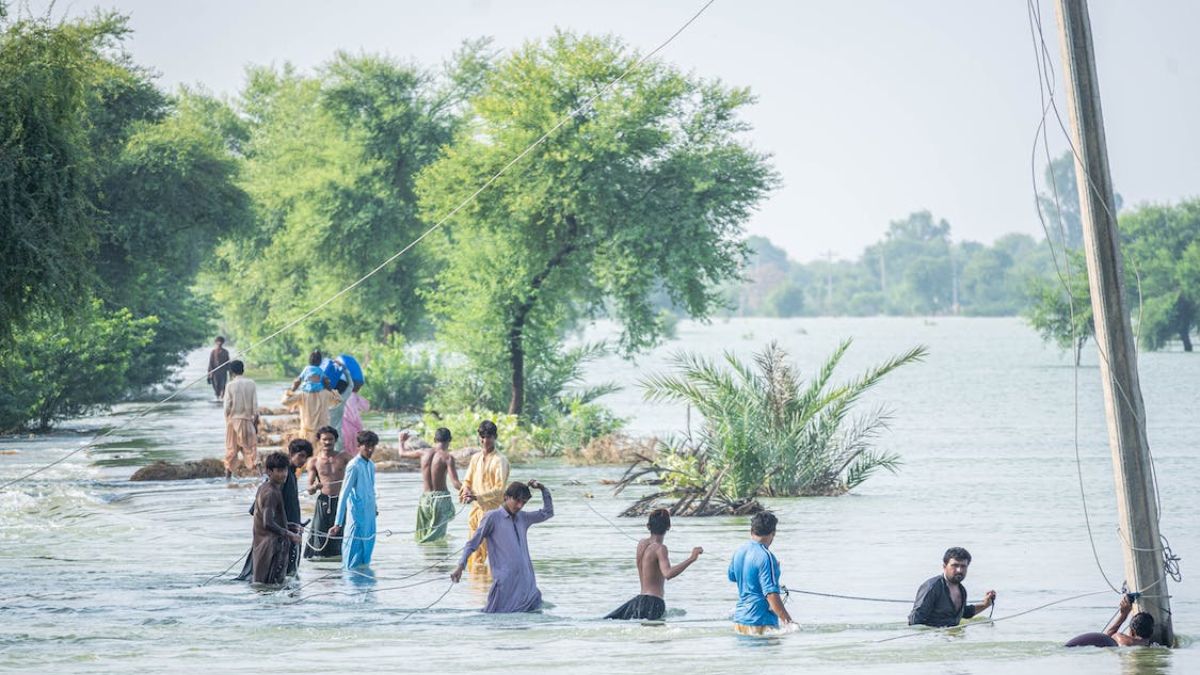Water is an essential resource that influences many facets of our culture, economics, and ecosystem. In order to efficiently manage water resources and plan for prospective water-related difficulties, individuals, communities, and industry must have a firm grasp on the hydrologic outlook. In this piece, I’ll explain what hydrologic outlook is, why it’s important, and what you can do to prepare for fluctuating water levels.
Precipitation forecasts, snowpack, soil moisture, and streamflow are only some of the variables that go into the hydrologic outlook. It helps people in charge of things like water distribution, flood prevention, and drought relief by providing crucial data on the region’s current and prospective water supplies.
Factors Influencing Water Conditions
Accurate hydrologic forecasting relies on a deep comprehension of the many factors that affect water quality. Among these are the following:
Precipitation Patterns
The quantity, pattern, and location of rain all play a role in how much water is available. Water resources can be severely impacted by shifts in precipitation patterns like greater rainfall or extended drought.
Snowmelt
The snowpack acts as a natural reservoir in areas that receive a lot of snowfall. Seasonal variations in streamflow, groundwater recharge, and available water are all affected by the timing and rate of snowmelt.
Soil Moisture
Water availability for plants, groundwater recharge, and runoff all depend critically on soil moisture content. Drought conditions can cause soil moisture to drop, which has consequences for farming, ecosystem health, and water availability.
Streamflow
The quantity of water moving through rivers, streams, and other channels is known as streamflow. Keeping an eye on streamflow can tell you a lot about the state of the environment, water supply, and likelihood of flooding.
Importance of Hydrologic Outlook
For a number of reasons, the hydrologic forecast is essential:
Water Resource Planning
Water resource managers can improve water allocation, infrastructure development, and water usage efficiency by analyzing hydrologic forecasts. Decisions about how to best address the water needs of a growing population and a wide range of industries can benefit from this data.
Flood and Drought Preparedness
Communities can better prepare for anticipated flood and drought events if they have a firm grasp on the hydrologic prognosis. Early warning systems and timely alerts based on the forecast allow authorities and individuals to take preventative steps in response to potential threats.
Environmental Management
The hydrologic forecast is crucial for the protection and administration of aquatic environments. Policymakers can take action to save vulnerable habitats, preserve water quality, and promote biodiversity if they have advance warning of impending floods.
Interpretation of Hydrologic Outlook Reports
Comprehensive data on water conditions and their potential consequences are available in hydrologic outlook reports. Stakeholders can’t properly respond without first grasping the information presented in these reports. A typical hydrologic outlook report will include the following sections and topics:
Water Supply Forecast
Based on data such as snowpack, soil moisture, and streamflow, the study estimates future water availability. It’s useful for industries and municipalities that rely on water to function, like agriculture and industry.
Flood Potential
The hydrologic outlook report identifies flood-prone locations by examining rainfall and streamflow data. The data here is useful for making contingency plans, evacuating people, and responding to emergencies like floods.
Drought Conditions
Indicating probable water shortages and their effects on agriculture, ecosystems, and water-reliant sectors, the paper evaluates the severity and breadth of the current drought situation.
Water Quality Implications
Reports on the hydrologic outlook may also include discussion of how shifting water conditions may impact water quality. Aquatic ecosystems and human water supplies are vulnerable to changes in sedimentation, temperature, and fertilizer discharge.
Impacts of Water Conditions on Different Sectors
The state of the water supply affects many different industries significantly.
Agriculture
In order to grow crops, raise cattle, and irrigate, farmers are dependent on a steady supply of water. In times of water scarcity, farmers may better plan planting dates, select suitable crops, and use water-saving practices if they have a firm grasp of the hydrologic picture.

Energy
Having enough water and streamflow is essential for hydroelectric power generating. Electricity production forecasts and reservoir levels can both benefit from the hydrologic outlook.

Municipal Water Supply
Municipalities and water utilities rely on hydrologic forecasts to plan for future water needs, manage storage capacity, and keep taps running for households, businesses, and factories.

Recreation and Tourism
Water quality is an important consideration for those who enjoy water sports like boating, fishing, and swimming. The hydrologic forecast is useful for tour operators and hikers in managing risks and preparing for activities.

Preparation and Mitigation Strategies
Preparation and contingency planning are crucial for safely navigating waters that are always evolving. Important indicators include:
Flood Preparedness
Communities can better prepare for flooding by implementing floodplain zoning, building levees and other flood control infrastructure, and creating emergency response plans.
Drought Mitigation
Responsible water usage should be encouraged and the effects of drought can be lessened by promoting water conservation practices, adopting efficient irrigation systems, and establishing water pricing mechanisms.
Water Storage and Management
In order to better manage water supply during dry seasons and increase resilience to future water difficulties, investing in water storage infrastructure, such as reservoirs and aquifer recharge projects, is essential.
Integrated Water Resources Management
The sustainability of water resources and the resolution of water-related complexities can be improved by collaborative water management approaches involving a wide range of stakeholders, such as government agencies, industries, communities, and environmental organizations.
Water Conservation Measures
When it comes to long-term water planning, water conservation is essential. The following are examples of water-saving practices that work:
- To reduce water waste, it is important to repair dripping fixtures and pipes.
- Putting in low-flow plumbing fixtures and fixtures for the shower and dishwasher will help save water.
- Using xeriscaping and other low-water-use landscaping techniques.
- Promoting awareness of water scarcity and giving advice on how to use water more efficiently.
Collaborative Efforts in Water Management
Collaborative efforts are necessary to solve water-related problems. Different types of stakeholders can help with water management in different ways.
- The exchange of water-related data and forecasts for the hydrologic future.
- Having discussions and working together on water management plans.
- Sustainable water solutions can be developed through investments in research and innovation.
- Fostering community involvement and education about water conservation efforts.
Case Studies: Successful Water Management Approaches
Several areas have found effective approaches to water management and have put them into practice. For instance:
- Melbourne, Australia, has saved a lot of water because to their extensive water conservation program that includes rainwater gathering, stormwater recycling, and public awareness initiatives.
- Water pricing mechanisms and rigorous controls implemented in California during drought periods helped manage water demand and lessen the effects of water scarcity.
These examples show how crucial it is to tackle water issues with forethought, cooperation among stakeholders, and creativity.
Future Outlook and Challenges
Population expansion, climate change, and shifting water demands are just a few of the forces that will determine the future of water management. Here are a few major obstacles and things to think about:
- Managing water resources in light of rising temperatures and more frequent extreme weather.
- Managing competing needs for water from uses as diverse as agriculture, industry, and environmental protection.
- Integrating water conservation measures into city planning and building projects.
- Guaranteeing that all communities, both at home and abroad, have easy access to potable water.
To ensure a sustainable and resilient water future, we will need continuous research, investment, and joint efforts to address these concerns.
Conclusion
The hydrologic perspective is a vital tool for stakeholders, as it gives crucial insights into water conditions that may be used to improve water management, emergency planning, and conservation efforts. Individuals, communities, and industry can adapt to shifting water circumstances by learning about the variables affecting water availability, analyzing hydrologic outlook reports, and taking preventative action.
FAQ
What is a hydrologic outlook?
A hydrologic outlook is an assessment of anticipated water conditions based on factors such as precipitation patterns, snowmelt, soil moisture, and streamflow. It helps stakeholders prepare for potential water-related challenges.
Why is the hydrologic outlook important?
The hydrologic outlook is crucial for water resource planning, flood and drought preparedness, and environmental management. It provides valuable information for decision-making and mitigating water-related risks.
How can individuals conserve water?
Individuals can conserve water by fixing leaks, using water-efficient appliances, practicing responsible landscaping, and raising awareness about water conservation.
What are some successful water management approaches?
Successful water management approaches include comprehensive conservation programs, water pricing mechanisms, and collaborative efforts involving multiple stakeholders.
What challenges does the future of water management face?
The future of water management faces challenges such as climate change, competing water demands, urban planning, and ensuring equitable access to clean water. Collaboration, innovation, and sustainable practices are crucial for addressing these challenges.











